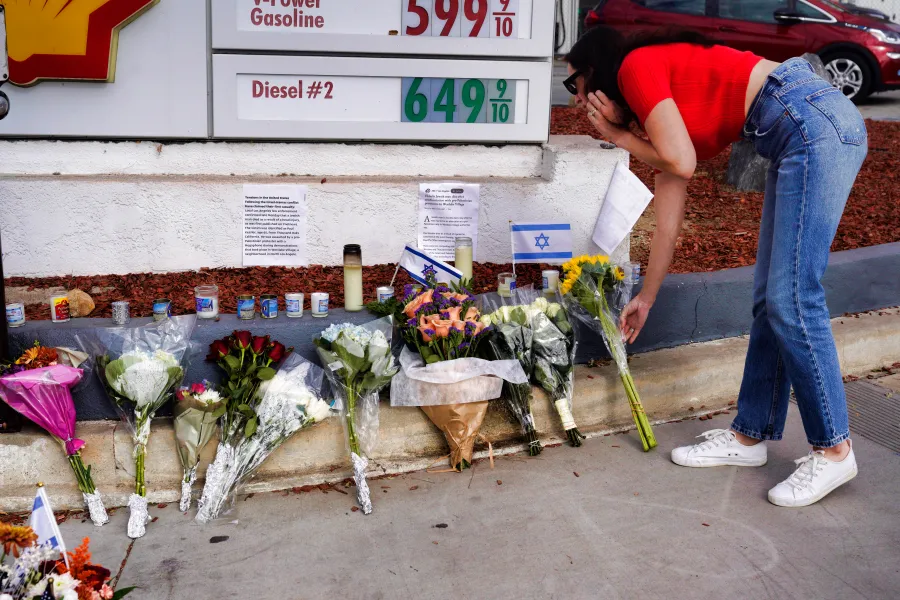In a high-profile case that has captured national attention, college professor Loay Abdel Fattah Alnaji, 51, of Moorpark, has pleaded not guilty to all charges related to the death of a Jewish man during dueling protests over the Israel-Hamas war in Thousand Oaks last year.
Alnaji, a computer science professor at Moorpark College, is accused of causing the death of 69-year-old Paul Kessler during a confrontation at a protest on November 5, 2023.
Incident Overview
The tragic incident occurred at the intersection of Thousand Oaks and Westlake Boulevards. According to Ventura County District Attorney Erik Nasarenko, Alnaji allegedly struck Kessler with a megaphone, causing him to fall and hit his head on the sidewalk.
Kessler later succumbed to the injuries he sustained during the altercation. The confrontation happened during protests between pro-Israel and pro-Palestinian demonstrators, highlighting the intense emotions and tensions surrounding the Israel-Hamas conflict.
Charges and Legal Proceedings
Alnaji has been charged with felony involuntary manslaughter and felony battery causing serious bodily injury, along with a special allegation that he personally inflicted great bodily injury.
During a preliminary hearing in May, prosecutors presented DNA evidence, including blood found on the megaphone Alnaji was carrying, which they claim matched Kessler’s. They also submitted video and audio evidence from Kessler’s phone that captured the moments leading up to his injury.
Defense Argument

Alnaji’s defense attorney, Ron Bamieh, acknowledges that an altercation took place but contends that his client’s actions did not cause Kessler’s fatal injury. Bamieh argues that while Kessler may have been pushed or hit by the megaphone, this did not result in his fall.
“It’s clear that when he fell, my client was six to eight feet away from him,” Bamieh told reporters. The defense also suggests that Kessler might have instigated the trouble at the rally.
Community Reaction and Impact
The death of Paul Kessler has deeply affected the Thousand Oaks community. In the days following the incident, a makeshift shrine appeared at the scene of the confrontation, with community members leaving flowers and paying their respects.
The incident has sparked broader discussions about the nature of protests and the potential for violence when emotions run high. It has also underscored the need for peaceful dialogue and understanding between opposing groups.
Legal and Social Implications
The case against Alnaji highlights the legal complexities involved in determining accountability in protest-related violence.
If convicted of all charges, Alnaji faces a maximum of four years in prison. His case serves as a stark reminder of the potential for deadly consequences during demonstrations and the importance of maintaining safety and order.
Prosecutors’ Standpoint
Prosecutors have maintained that the evidence against Alnaji is substantial. The DNA analysis, coupled with the video and audio recordings, form the crux of their case. Ventura County District Attorney Erik Nasarenko has emphasized the seriousness of the charges and the need for justice for Kessler and his family.
Looking Forward
As the legal proceedings continue, the community remains divided. Supporters of both Kessler and Alnaji have expressed their views, with many calling for a fair trial and due process. The case will likely continue to draw attention as it progresses, with both sides presenting their arguments and evidence.
Broader Context
This incident is not isolated but part of a larger pattern of clashes and confrontations that have occurred globally in relation to the Israel-Hamas conflict. Such incidents often lead to tragic outcomes, emphasizing the need for effective conflict resolution strategies and the importance of de-escalation in protest situations.
Conclusion
The case of Loay Abdel Fattah Alnaji and the death of Paul Kessler is a poignant example of the risks inherent in public demonstrations, especially those related to highly charged political and social issues.
As the trial unfolds, it will serve as a crucial examination of legal responsibility and the consequences of protest-related violence. The outcome will not only impact the individuals directly involved but also set a precedent for how similar cases might be handled in the future.
Read more news:
